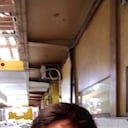Which Renaissance artist is credited with developing linear perspective?
Specifically, in history the theory of linear perspective is said to be the brainchild of the Florentine architect and engineer Filippo Brunelleschi (1377–1446). Brunelleschi, Leon Battista Alberti (1404–72) and their followers, helped to remake geometry during the 17th century. The scheme (theory) of Brunelleschi and Alberti was said to be initially presented in Alberti’s De pictura, a treatise written in vernacular Italian in 1435 about art and painting.
Pointedly linear perspective is a type of perspective used by artists (especially in the Renaissance) in which the relative size, shape, and position of objects are seen and determined by drawn or imagined lines converging at a point on the horizon. It is a system of creating an illusion of depth on a flat surface. All parallel lines in a painting or drawing using this system converge in a single vanishing point on the existing art composition’s horizon line.
While still in the early phase of his architectural career (probably c. 1410–15), Brunelleschi rediscovered the principles of linear-perspective. This construction was known to the Greeks and Romans, but it was buried along with many other aspects of the ancient civilization during the European Middle Ages. Brunelleschi demonstrated his findings with two painted panels, now lost, depicting Florentine. Now Brunelleschi's life and career is based on a biography written in the 1480s by a younger contemporary, who is identified as Antonio di Tuccio Manetti.
More Info:
en.wikipedia.org


